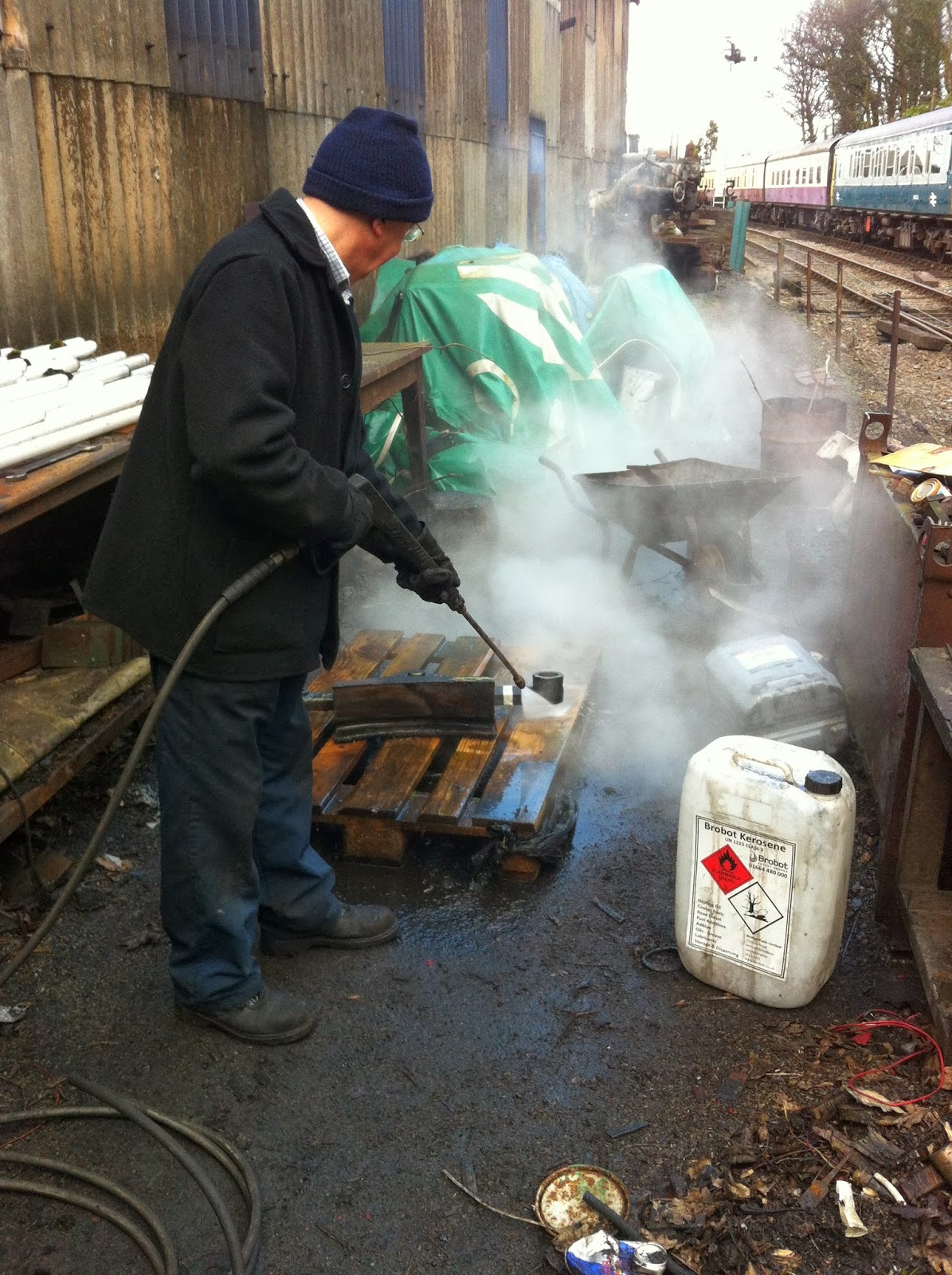Each pin was carefully caked in a film of thick steam oil to protect it whilst uncovered. The cold weather results in the steam oil turning more viscous and it ends up looking like treacle. This thickening action does however make it stick to any parts rather well, and therefore it is perfect for jobs such as this...
With the crank pins oiled and thus protected, attention turned to the rods. These will all be degreased and burnished in due course: one by one. Reece & Cameron took on the task of degreasing and rubbing down the forward coupling rod from the Fireman's side...
 |
| "Silly Old Rod, Always Lying About On The Job!" |
Outside, Eddie was busy with the hot-water pressure washer and was degreasing various parts. I had a little go at pressure washing in between jobs and got duly filthy in the process! The next job I was given was to make some new trimmings. Trimmings are part of a locomotive's lubrication system and feature worsted wool. The wool carries oil over into the relevant feed-way by means of capillary action. The oil works its way up through the wool, up & over into the feed-way and thus lubricates the connected part. "Sir Gomer" for example uses trimmings for all of her coupling rods, the gudgeon pins, the big ends, the glands, the valve spindles etc. Though this process may seem a little old fashioned and ineffective, it should be remembered that a steam locomotive only theoretically requires three drops of oil per mile to most parts, or so the old saying goes. With the wool in my possession, I thought I'd have a go...following a good lesson in trimming manufacture from Brian...
Copper wire is used for trimmings as, if any copper breaks away for whatever reason, the theory is that it will not score or damage bearings, unlike steel for example which will. The trimming is created by getting yourself a length of copper wire and bending it in half before twisting. You should create the loop at the top before twisting down to make the trimming the correct length. Depending on the diameter of the hole you are feeding with oil, the trimming should be made accordingly. In my case it was a coupling rod brass feed-way, and the diameter of the hole required three strands of worsted wool. The trimming should not be a tight fit in the hole, but should allow oil to pass whilst not allowing the entire quantity of the oil pot to be dumped all at once. Below we have my first attempt at a trimming (though it was a bit more attractive following some modifications!)...
 |
| "What Is That?!" |
 |
| "Good As New" |





No comments:
Post a Comment